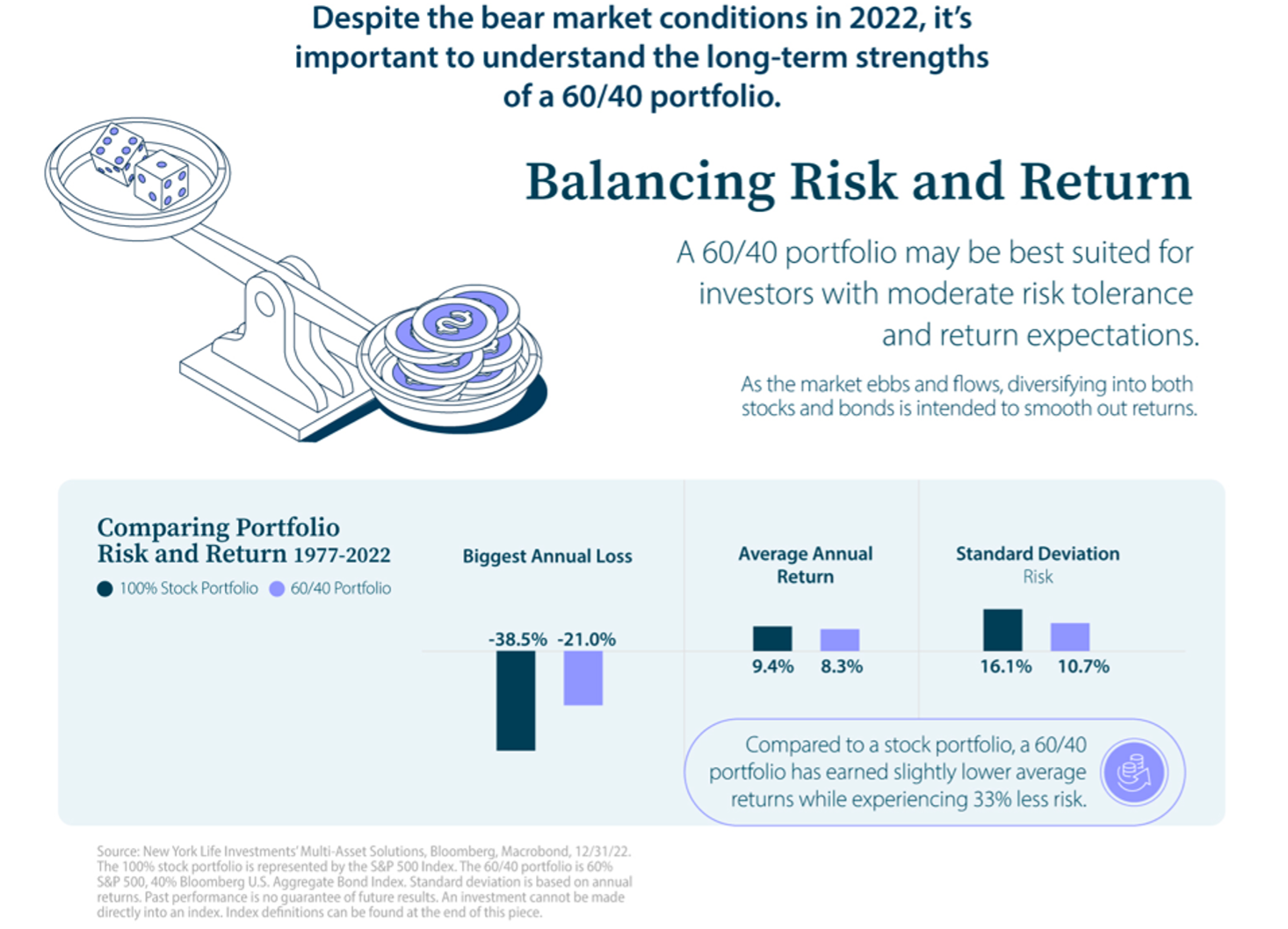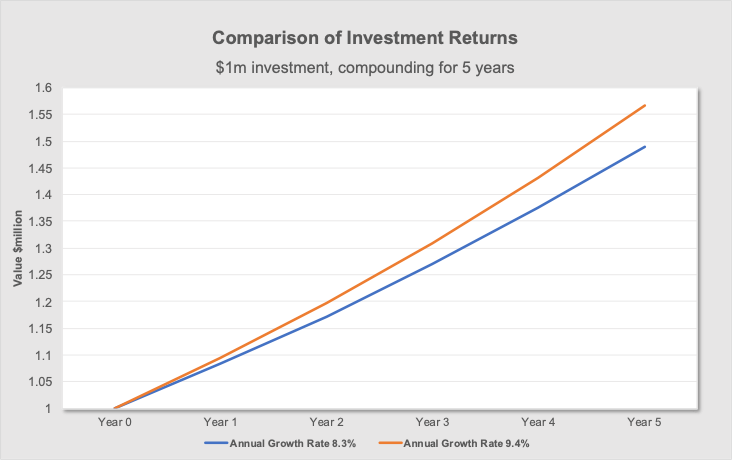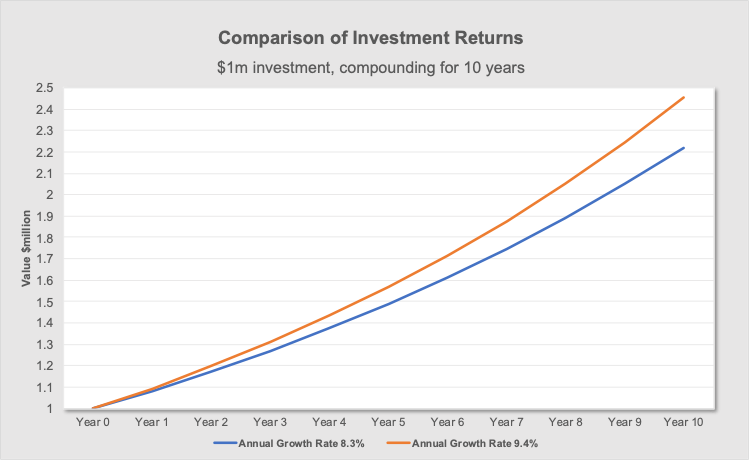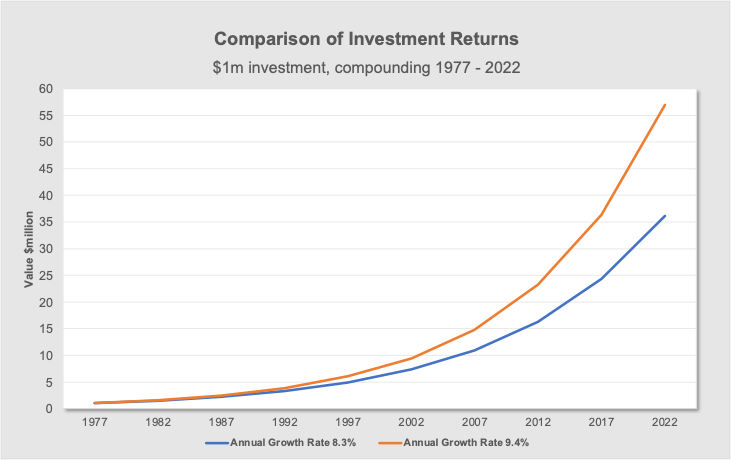A Common Trap – Did It Fool You?
The Investment Perspective – June 2023

“Neither the investing method nor the fundamentals of the business are right or wrong because the mood of the market is favourable or unfavourable toward the “stock”. That is because when you really think about it, “stocks” (shares) are all about the financials and the trading price, the share price… the cash up value. What matters more is the economics of the business”
Peter Flannery
Key Points:
- It is important to invest according to your investing risk preferences.
- It is also important to invest according to your goals …
- Especially if getting enough passive income later might be a challenge.
- Don’t be tricked by intelligent sounding ‘investment science’ that sounds good, but is not totally good for you.
Be Careful What You Choose

The above diagram discusses the well-known 60/40 portfolio. This is about 60% of the portfolio being invested in stocks, with the remaining 40% invested in bonds. The above diagram also shows the largest annual trading loss by comparing a 100% stock portfolio (the black bar) with a 60/40 portfolio (the purple bar). It also compares the average annual return and the standard deviation, which is a measure of portfolio volatility.
The 60/40 portfolio has been in existence for decades. 60% of the portfolio is invested in stocks and the remaining 40% in bonds. The idea is that you have the best of both worlds. A good weighting of assets within the portfolio targeting growth but, at the same time, a reasonable weighting of assets in the portfolio to guard against high levels of volatility and uncertain markets.
There are many, many different types of risks. In this context, the main risk considered is market and portfolio volatility.
The above analysis shows that from 1977 through 2022, the biggest market decline (referred to above as biggest annual loss at 38.5% was experienced by the 100% stock portfolio. Also, the highest level of risk as measured by standard deviation (volatility at 16.1%) was also seen by the stock portfolio.
This is where we need to be careful.
The analysis shows that the average annual return for the 100% stock portfolio came at 9.4% over that time compared to 8.3% for the 60/40 portfolio.
Not much difference on the surface.
Further, the analysis shows though, that the amount of risk incurred as measured by standard deviation at 16.1% was significantly greater for the 100% stock portfolio when compared to the 10.7% volatility experienced by the 60/40 portfolio.
The conclusion here is that for a very small amount of return, one has to endure by comparison, a much greater level of risk. In other words, the idea here is that the risk is out of proportion for the additional returns.
Let’s take a closer look, though…
The truth
Firstly, it’s important to bear in mind that risk is referred to as volatility and as is often the case, measured by standard deviation. That’s fine. However, this is where it becomes interesting.
When we look at modern portfolio theory and the 60/40 portfolio, it’s all about the maximum returns for the minimum risk.
That means the maximum return for the minimum volatility.
Now, if I am a less advanced or more cautious investor, then this approach to investing does have some validity. The question is though, is it right?
Drilling down…
If we think about the fact that volatility is a different thing to permanent loss, we have a better insight – closer to the truth.
Loss can be considered permanent, whereas volatility, as it is referred to in the above analysis as measured by standard deviation, is temporary.
Put simply, if the value of our portfolio declines quite a bit but then recovers, then what’s the problem with the volatility (unless, of course, I need the money in the midst of volatility, sure). However, hopefully we’ve been doing some financial planning, and we’re not exposed to that situation.
Anyway, the other point worth making is that whilst I may prefer a more diversified portfolio that reduces volatility over and above returns if I am more of a defensive investor, if on the other hand, I am a more advanced investor and not a defensive investor, then volatility actually becomes my friend.
You know what I’m going to say next…that’s because lower prices mean better buying.
When we invest using the modern portfolio theory and the 60/40 portfolio, there is lots of investing “science” around reducing volatility. Valid but not altogether right.
That’s because when we look closely, providing we have the appetite for volatility and develop an understanding that lower prices means better buying rather than loss, then volatility becomes less of an issue.
Indeed, volatility is an advantage that we look for rather than something to feel anxious about or want to avoid.
Funny how when it comes to buying a loaf of bread, filling up our petrol tanks, buying a house, or you name it, we all love to get a bargain.
How come when it’s productive assets that happen to be listed on the share market and when prices are down, people are scared and run away!
Go figure!
What do the facts tell us?

The graph above compounds $1 million over 5 years. The blue line projects the 60 / 40 portfolio. The orange line compounds the 100% stocks portfolio.
The difference is $77,214.45 more in the 100% stock portfolio.

The graph above compounds $1 million over 10 years. The blue line projects the 60 / 40 portfolio. The orange line compounds the 100% stocks portfolio.
The difference is $236,037.84 in the 100% stock portfolio.

The graph above compounds $1 million over 45 years. The blue line projects the 60 / 40 portfolio. The orange line compounds the 100% stocks portfolio.
Do you see the difference?
Over five years, admittedly, the difference doesn’t look like much. Still though, I don’t know about you but I’d rather have more money than less. The difference is $77,214.45
Over ten years, the difference is much more obvious, and let’s face it, ten years is not that long. The difference is $236,037.84
Over 45 years the difference is $20,823,144.49
“We are drowning in information but starved for knowledge.”
–John Naisbitt
